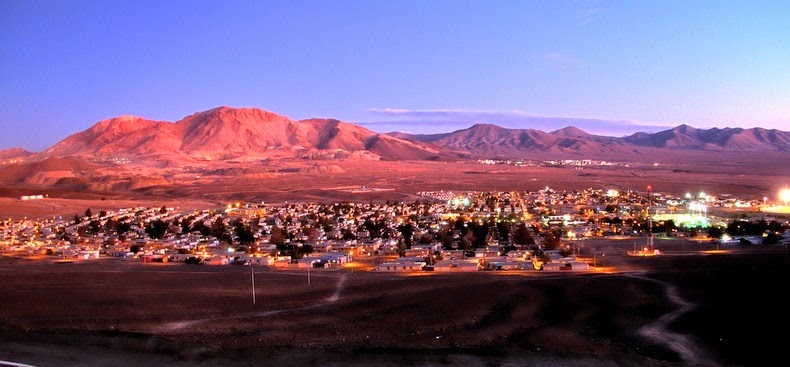Located at an elevation of more than 2,400 meters in the foothills of the Andes and in the middle of the Atacama Desert, the town of El Salvador was built solely to serve as office and residence for those working on the copper mines. The town came into being as a result of discovery of the ore in 1954, when the Anaconda Copper Mining Company, concerned about declining reserves in its Potrerillos mine, sent prospectors in search of a new source. Due to its remote location, the company had to build El Salvador as a self-contained and self-sustaining town complete with housing, schools, stores, water, electrical plants and even a railway.
Satellite images of El Salvador shows the town to be shaped like a Roman helmet. The legend goes that when an executive of Anaconda Mining Company travelled to the proposed town site with his son, the boy had with him his beloved toy - a Roman helmet, which he lost in the desert. Years later once the city was built, the boy was flown over the town and his father said “Remember the toy helmet you lost as a young boy, look down son, there it is.”
The truth is that this legend is nothing but a myth. El Salvador was designed by the American architect Raymond Olson according to a very precise design scheme agreed with the Anaconda Copper Mining Company. Opened in 1959, the town is laid out in the pattern of an amphitheater and its semicircle shape fits perfectly with the topography where it was inserted.
The semicircle design made it feasible to accommodate housing and services suitable to the needs of more than 10,000 people, and located all of them in a position equidistant from the city center. According to Raymond Olson, this particular shape was chosen “to avoid the monotony displayed in many strictly gridiron pattern town-sites”. In another attempt to break monotony, the concrete houses of the camp were painted in 10 different pastel colors from turquoise blue to light yellow.
More than 50 years after its foundation, El Salvador has become a complex settlement with the necessary infrastructure to be considered a city. Today, El Salvador has a population of approximately 7,000, but at its peak, the town once had 24,000 inhabitants.
In 1971, after nationalization of copper industry in Chile, full ownership of the mine and the town was turned over to the newly formed, state owned copper mining company Codelco.
Photo credit: Google/GeoEye, taken Feb. 11, 2010.
The aerodrome of El Salvador. Photo credit

Sources: Wikipedia / Codelco.com / Angela Vergara




















Comments
Post a Comment